-
×
 Taoist Yoga By Frantzis
1 × $6,00
Taoist Yoga By Frantzis
1 × $6,00 -
×
 Inside De la Riva by Christian Uflacker (Xaropinho)
1 × $6,00
Inside De la Riva by Christian Uflacker (Xaropinho)
1 × $6,00 -
×
 Books That Matter: The History of the Decline and Fall of the Roman Empire By Leo Damrosch
1 × $5,00
Books That Matter: The History of the Decline and Fall of the Roman Empire By Leo Damrosch
1 × $5,00 -
×
 The Black Death: New Lessons from Recent Research By Dorsey Armstrong
1 × $5,00
The Black Death: New Lessons from Recent Research By Dorsey Armstrong
1 × $5,00 -
×
 How I use Technical Analysis And Orderflow By Adam Webb - Traderskew
1 × $54,00
How I use Technical Analysis And Orderflow By Adam Webb - Traderskew
1 × $54,00 -
×
 Lapel Attacks by Robson Gracie
1 × $6,00
Lapel Attacks by Robson Gracie
1 × $6,00 -
×
 Real Estate Financial Modeling By Aaron Hancock - Wall Street Prep
1 × $54,00
Real Estate Financial Modeling By Aaron Hancock - Wall Street Prep
1 × $54,00 -
×
 Oral Sex Mastery by Pleasure Mechanics
1 × $69,00
Oral Sex Mastery by Pleasure Mechanics
1 × $69,00 -
×
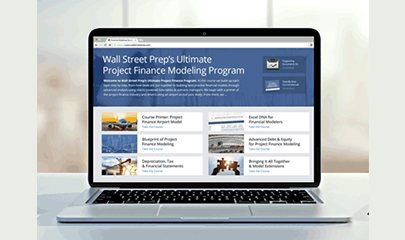 The Ultimate Project Finance Modeling Package By Kyle Chaning Pearce - Wall Street Prep
1 × $69,00
The Ultimate Project Finance Modeling Package By Kyle Chaning Pearce - Wall Street Prep
1 × $69,00 -
×
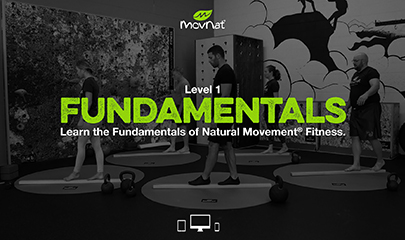 MovNat Level 1 Fundamentals By Danny Clark And Stefano Tripney - MovNat
1 × $78,00
MovNat Level 1 Fundamentals By Danny Clark And Stefano Tripney - MovNat
1 × $78,00 -
×
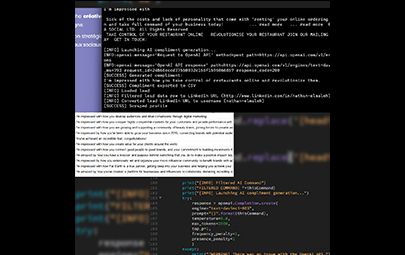 Icebreaker ZERO - Personalize your Outreach at UNLIMITED Scale By Kevin Sozanski
1 × $46,00
Icebreaker ZERO - Personalize your Outreach at UNLIMITED Scale By Kevin Sozanski
1 × $46,00 -
×
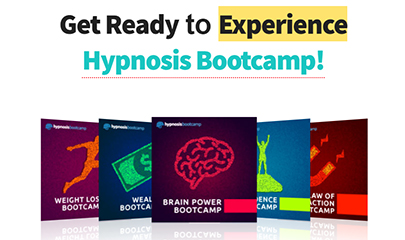 Hypnosis Bootcamp - 5 Course Bundle
1 × $139,00
Hypnosis Bootcamp - 5 Course Bundle
1 × $139,00 -
×
 The Be More Persuasive Hypnosis 5-Pack By Uncommon Knowledge
1 × $15,00
The Be More Persuasive Hypnosis 5-Pack By Uncommon Knowledge
1 × $15,00 -
×
 Photoshop CC For The Web By Stone River eLearning
1 × $6,00
Photoshop CC For The Web By Stone River eLearning
1 × $6,00 -
×
 Secrets Of Subtle Sales Mastery Deluxe By Paul Ross
1 × $23,00
Secrets Of Subtle Sales Mastery Deluxe By Paul Ross
1 × $23,00 -
×
 Hooked on Writing Hooks By Rob Lennon
1 × $5,00
Hooked on Writing Hooks By Rob Lennon
1 × $5,00 -
×
 Embody Your Sacred Wholeness Through the Black Madonna by Christena Cleveland - The Shift Network
1 × $54,00
Embody Your Sacred Wholeness Through the Black Madonna by Christena Cleveland - The Shift Network
1 × $54,00 -
×
 The Best Option Trading Course By David Jaffee - Best Stock Strategy
1 × $15,00
The Best Option Trading Course By David Jaffee - Best Stock Strategy
1 × $15,00 -
×
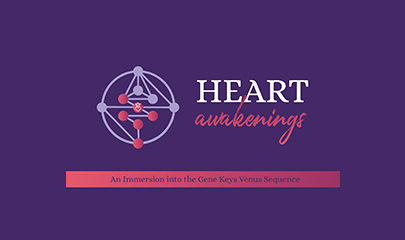 Heart Awakenings By Unlock Your Design Academy
1 × $46,00
Heart Awakenings By Unlock Your Design Academy
1 × $46,00 -
×
 Jay Campbell’s Positive Muscle Failure Video Training Program
1 × $46,00
Jay Campbell’s Positive Muscle Failure Video Training Program
1 × $46,00 -
×
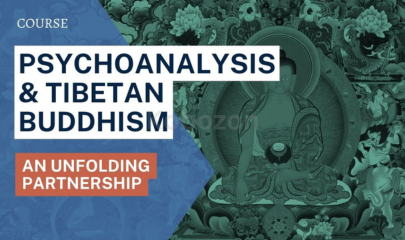 Psychoanalysis & Tibetan Buddhism: An Unfolding Partnership - Collection By Pilar Jennings
1 × $23,00
Psychoanalysis & Tibetan Buddhism: An Unfolding Partnership - Collection By Pilar Jennings
1 × $23,00 -
×
 The Sciatica Solution Program By Got Rom
1 × $23,00
The Sciatica Solution Program By Got Rom
1 × $23,00 -
×
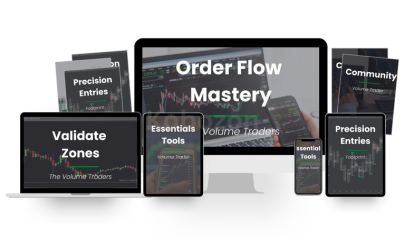 Order Flow Mastery (New 2024) By The Volume Traders
1 × $24,00
Order Flow Mastery (New 2024) By The Volume Traders
1 × $24,00 -
×
 Fitness Business Essentials Bundle By Carroll Performance
1 × $458,00
Fitness Business Essentials Bundle By Carroll Performance
1 × $458,00 -
×
 Understanding Disorders of the Brain By Sandy Neargarder
1 × $5,00
Understanding Disorders of the Brain By Sandy Neargarder
1 × $5,00 -
×
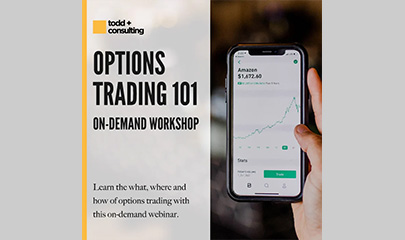 Options Trading Workshop On Demand By Affordable Financial Education
1 × $69,00
Options Trading Workshop On Demand By Affordable Financial Education
1 × $69,00 -
×
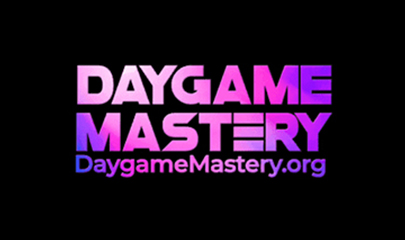 Daygame Mastery - Mastery Package By Justin Marc
1 × $179,00
Daygame Mastery - Mastery Package By Justin Marc
1 × $179,00 -
×
 A History of Eastern Europe By Vejas Gabriel Liulevicius
1 × $5,00
A History of Eastern Europe By Vejas Gabriel Liulevicius
1 × $5,00 -
×
 Lost Christianities: Christian Scriptures and the Battles over Authentication By Bart Ehrman
1 × $5,00
Lost Christianities: Christian Scriptures and the Battles over Authentication By Bart Ehrman
1 × $5,00 -
×
 Scale with Courses By Laurie Burrows
1 × $179,00
Scale with Courses By Laurie Burrows
1 × $179,00 -
×
 Foundations of Western Civilization II: A History of the Modern Western World By Robert Bucholz
1 × $5,00
Foundations of Western Civilization II: A History of the Modern Western World By Robert Bucholz
1 × $5,00 -
×
 ProfileMate 2023 By Luke Maguire
1 × $15,00
ProfileMate 2023 By Luke Maguire
1 × $15,00 -
×
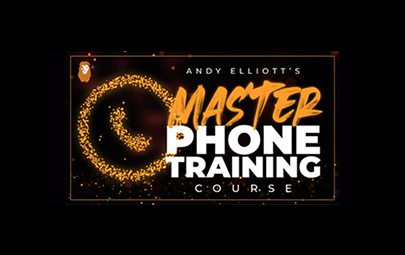 Master Phone Training By Andy Elliott
1 × $194,00
Master Phone Training By Andy Elliott
1 × $194,00 -
×
 Notorious London: A City Tour By Paul Deslandes
1 × $5,00
Notorious London: A City Tour By Paul Deslandes
1 × $5,00 -
×
 Playful Millions 2023 By Cat Howell
1 × $31,00
Playful Millions 2023 By Cat Howell
1 × $31,00 -
×
 The Persian Empire By John Lee
1 × $5,00
The Persian Empire By John Lee
1 × $5,00 -
×
 Getting Started With InDesign CC By Stone River eLearning
1 × $6,00
Getting Started With InDesign CC By Stone River eLearning
1 × $6,00 -
×
 Opthink By Everyday Spy
1 × $69,00
Opthink By Everyday Spy
1 × $69,00 -
×
 60 Minutes Stamina By MSH Publishing
1 × $31,00
60 Minutes Stamina By MSH Publishing
1 × $31,00 -
×
 Agency Partner Program By Jason Wardrop
1 × $15,00
Agency Partner Program By Jason Wardrop
1 × $15,00 -
×
 Intro To The Dla Internet Bid Board System (Dibbs) By Sirena Thomas
1 × $622,00
Intro To The Dla Internet Bid Board System (Dibbs) By Sirena Thomas
1 × $622,00 -
×
 Project Finance And Infrastructure Modeling 2024 By Breaking Into Wall Street
1 × $39,00
Project Finance And Infrastructure Modeling 2024 By Breaking Into Wall Street
1 × $39,00 -
×
 Native Peoples of North America By Daniel Cobb
1 × $5,00
Native Peoples of North America By Daniel Cobb
1 × $5,00 -
×
 A Children Guide to Folklore and Wonder Tales By Hannah Harvey
1 × $5,00
A Children Guide to Folklore and Wonder Tales By Hannah Harvey
1 × $5,00 -
×
 Understanding and Overcoming Fear By Margee Kerr
1 × $5,00
Understanding and Overcoming Fear By Margee Kerr
1 × $5,00 -
×
 6 Powerful Steps for Business Empowerment (Videos Only) By John Demartini
1 × $31,00
6 Powerful Steps for Business Empowerment (Videos Only) By John Demartini
1 × $31,00 -
×
 AI Money Bots System By Stas Prokofiev
1 × $23,00
AI Money Bots System By Stas Prokofiev
1 × $23,00 -
×
 Ancient English City Composite Stock Assets by Clinton Lofthouse
1 × $8,00
Ancient English City Composite Stock Assets by Clinton Lofthouse
1 × $8,00 -
×
 Essentials of Plant-Based Cuisine By Mark Reinfeld
1 × $6,00
Essentials of Plant-Based Cuisine By Mark Reinfeld
1 × $6,00 -
×
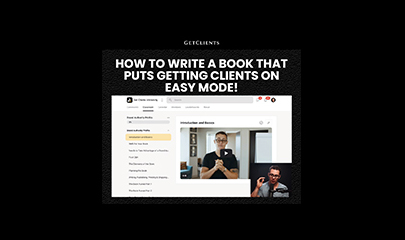 Brand Authority Profits By Dan Henry
1 × $39,00
Brand Authority Profits By Dan Henry
1 × $39,00 -
×
 Training Session - Back Escapes by Renzo Gracie
1 × $6,00
Training Session - Back Escapes by Renzo Gracie
1 × $6,00 -
×
 Continuity In A Weekend By Michael Shreeve - Peaceful Profits
1 × $54,00
Continuity In A Weekend By Michael Shreeve - Peaceful Profits
1 × $54,00 -
×
 Hypnosis: Master Self Hypnosis Now! by James Metcalf
1 × $5,00
Hypnosis: Master Self Hypnosis Now! by James Metcalf
1 × $5,00 -
×
 Learn Yoga Arm Balance And Inversions By Yogi Flight School
1 × $54,00
Learn Yoga Arm Balance And Inversions By Yogi Flight School
1 × $54,00 -
×
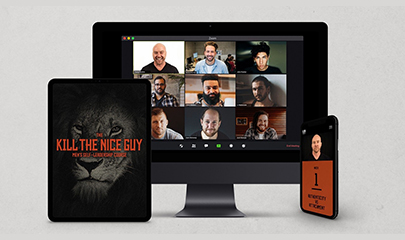 The Kill The Nice Guy - The Warrior By Traver Boehm
1 × $109,00
The Kill The Nice Guy - The Warrior By Traver Boehm
1 × $109,00 -
×
 FUT SAO – Buddhist Hand By Chow Gar Tong Long
1 × $23,00
FUT SAO – Buddhist Hand By Chow Gar Tong Long
1 × $23,00 -
×
 Stupid Simple SEO 2023 by Mike Pearson
1 × $5,00
Stupid Simple SEO 2023 by Mike Pearson
1 × $5,00 -
×
 The Zodiac and the Salts of Salvation: Parts One and Two (Audiobook) By George Carey
1 × $5,00
The Zodiac and the Salts of Salvation: Parts One and Two (Audiobook) By George Carey
1 × $5,00 -
×
 Opening Up: A Guide To Creating And Sustaining Open Relationships by Tristan Taormino
1 × $5,00
Opening Up: A Guide To Creating And Sustaining Open Relationships by Tristan Taormino
1 × $5,00 -
×
 Association Domination Masterclass By Perry Belcher
1 × $6,00
Association Domination Masterclass By Perry Belcher
1 × $6,00 -
×
 Pleasure Principles By Nadine Lee
1 × $69,00
Pleasure Principles By Nadine Lee
1 × $69,00 -
×
 Introductory Herbal Course By The Herbal Academy
1 × $31,00
Introductory Herbal Course By The Herbal Academy
1 × $31,00 -
×
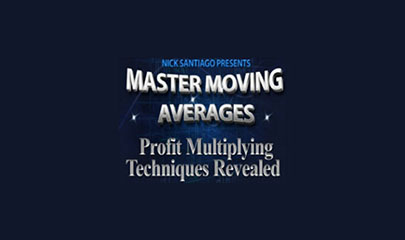 Master Moving Averages And Profit Multiplying Techniques By Nick Santiago And InTheMoneyStocks
1 × $54,00
Master Moving Averages And Profit Multiplying Techniques By Nick Santiago And InTheMoneyStocks
1 × $54,00 -
×
 How to Build a GPT 4 Chatbot By Dan Shipper
1 × $31,00
How to Build a GPT 4 Chatbot By Dan Shipper
1 × $31,00 -
×
 Pilates Apparatus - The Complete Collection By Breathe Education
1 × $272,00
Pilates Apparatus - The Complete Collection By Breathe Education
1 × $272,00 -
×
 Norse Mythology By Jackson Crawford
1 × $5,00
Norse Mythology By Jackson Crawford
1 × $5,00 -
×
 Power BI Visual Data Analytics for Project Controls By Jeancarlo Duran Maica - Project Control Academy
1 × $272,00
Power BI Visual Data Analytics for Project Controls By Jeancarlo Duran Maica - Project Control Academy
1 × $272,00 -
×
 Breakfast All Day By Master Class
1 × $6,00
Breakfast All Day By Master Class
1 × $6,00 -
×
 This Day in History: August By Wondrium
1 × $5,00
This Day in History: August By Wondrium
1 × $5,00 -
×
 Mailbox Money Machine By Lisa Song Sutton
1 × $23,00
Mailbox Money Machine By Lisa Song Sutton
1 × $23,00 -
×
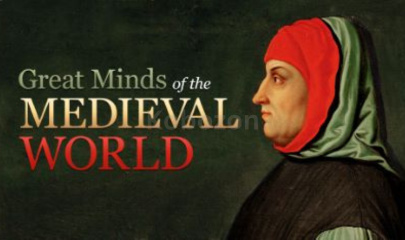 Great Minds of the Medieval World By Dorsey Armstrong
1 × $5,00
Great Minds of the Medieval World By Dorsey Armstrong
1 × $5,00 -
×
 Isle of Skye Foggy Mountainside Composite Stock Assets by Clinton Lofthouse
1 × $8,00
Isle of Skye Foggy Mountainside Composite Stock Assets by Clinton Lofthouse
1 × $8,00 -
×
 Capital Club Academy
1 × $31,00
Capital Club Academy
1 × $31,00 -
×
 Orgasmic, Tantric And Erotic Hypnosis By David Mears
1 × $163,00
Orgasmic, Tantric And Erotic Hypnosis By David Mears
1 × $163,00 -
×
 Mentoring Program Weekly Calls and Teleconference by Cory Skyy
1 × $5,00
Mentoring Program Weekly Calls and Teleconference by Cory Skyy
1 × $5,00 -
×
 Master Collection | GRUNGE RAW Backdrops by Gary Martin
1 × $8,00
Master Collection | GRUNGE RAW Backdrops by Gary Martin
1 × $8,00 -
×
 Compound Butterfly Blueprint (Elite Package) By Allison Ostrander - Simpler Trading
1 × $62,00
Compound Butterfly Blueprint (Elite Package) By Allison Ostrander - Simpler Trading
1 × $62,00 -
×
 Personifying the Quantum By John Demartini
1 × $8,00
Personifying the Quantum By John Demartini
1 × $8,00 -
×
 eCom Fast Track Bundle By Justin Phillips
1 × $15,00
eCom Fast Track Bundle By Justin Phillips
1 × $15,00 -
×
 The Art Of Strategic Freelance Consulting By Paul Millerd
1 × $39,00
The Art Of Strategic Freelance Consulting By Paul Millerd
1 × $39,00 -
×
 Become a Professional Python Programmer Bundle By Stone River eLearning
1 × $78,00
Become a Professional Python Programmer Bundle By Stone River eLearning
1 × $78,00 -
×
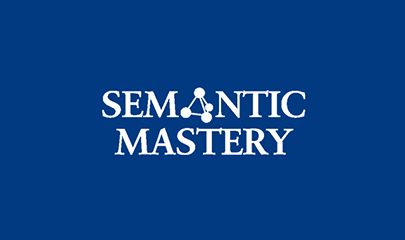 POFU Live 2021 (4th Edition) By Semantic Mastery Crew
1 × $39,00
POFU Live 2021 (4th Edition) By Semantic Mastery Crew
1 × $39,00 -
×
 Make Small Talk Sexy 2.0 by Bobby Rio
1 × $5,00
Make Small Talk Sexy 2.0 by Bobby Rio
1 × $5,00 -
×
 The Quantum Angels Program by Burt Goldman
1 × $6,00
The Quantum Angels Program by Burt Goldman
1 × $6,00 -
×
 Fort Worth Playboy Evergreen VIP Bundle
1 × $69,00
Fort Worth Playboy Evergreen VIP Bundle
1 × $69,00 -
×
 Wealth Alchemy 2.0 By Elisa Canali
1 × $31,00
Wealth Alchemy 2.0 By Elisa Canali
1 × $31,00 -
×
 2 Girls Teach Sex Bundle By Bobby Bradshaw, Shawna Lenee And Tori Black
1 × $5,00
2 Girls Teach Sex Bundle By Bobby Bradshaw, Shawna Lenee And Tori Black
1 × $5,00 -
×
 The Integral Body: Injury Proof Your Body By Mark Suski
1 × $39,00
The Integral Body: Injury Proof Your Body By Mark Suski
1 × $39,00 -
×
 Back Attacks Enter The System By John Danaher
1 × $46,00
Back Attacks Enter The System By John Danaher
1 × $46,00 -
×
 Ultimate Day Trading Program By Maroun4x
1 × $5,00
Ultimate Day Trading Program By Maroun4x
1 × $5,00 -
×
 Cultural Literacy for Religion: Everything the Well-Educated Person Should Know By Mark Berkson
1 × $5,00
Cultural Literacy for Religion: Everything the Well-Educated Person Should Know By Mark Berkson
1 × $5,00 -
×
 The Virtual Workshop By John Wineland
1 × $39,00
The Virtual Workshop By John Wineland
1 × $39,00 -
×
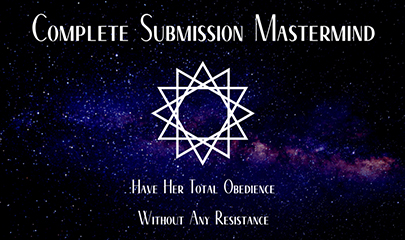 Complete Submission Mastermind By Veronika
1 × $194,00
Complete Submission Mastermind By Veronika
1 × $194,00 -
×
 Business by Design: Fuel By Unlock Your Design Academy
1 × $23,00
Business by Design: Fuel By Unlock Your Design Academy
1 × $23,00 -
×
 DGR Interactive By David Grey
1 × $54,00
DGR Interactive By David Grey
1 × $54,00 -
×
 Bookkeeping for Crafters By Lauren Venell
1 × $5,00
Bookkeeping for Crafters By Lauren Venell
1 × $5,00 -
×
 The History and Achievements of the Islamic Golden Age By Eamonn Gearon
1 × $5,00
The History and Achievements of the Islamic Golden Age By Eamonn Gearon
1 × $5,00 -
×
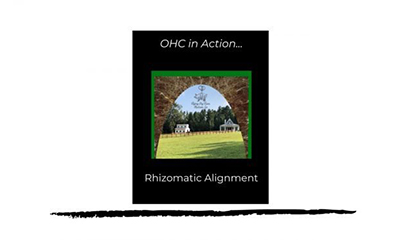 OHC in Action: Rhizomatic Alignment By John Overdurf
1 × $78,00
OHC in Action: Rhizomatic Alignment By John Overdurf
1 × $78,00 -
×
 Online Fitness And Nutrition Coach By Dala McDevitt - DLDNation
1 × $319,00
Online Fitness And Nutrition Coach By Dala McDevitt - DLDNation
1 × $319,00 -
×
 Dating Decoded by David Tian
1 × $5,00
Dating Decoded by David Tian
1 × $5,00 -
×
 Master Lover 2023 - Secrets For Mystical Sexual Union By Tantra Garden
1 × $69,00
Master Lover 2023 - Secrets For Mystical Sexual Union By Tantra Garden
1 × $69,00 -
×
 Training Session - Escapes by Renzo Gracie
1 × $6,00
Training Session - Escapes by Renzo Gracie
1 × $6,00 -
×
 Access Ancient Soul Wisdom - Past Lives Course 2 By Akashic Knowing
1 × $85,00
Access Ancient Soul Wisdom - Past Lives Course 2 By Akashic Knowing
1 × $85,00 -
×
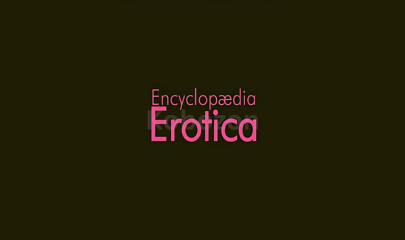 Encyclopaedia Erotica by Parkstone Press
1 × $5,00
Encyclopaedia Erotica by Parkstone Press
1 × $5,00 -
×
 Land Flipping 101 Course By Kris Thomas
1 × $209,00
Land Flipping 101 Course By Kris Thomas
1 × $209,00 -
×
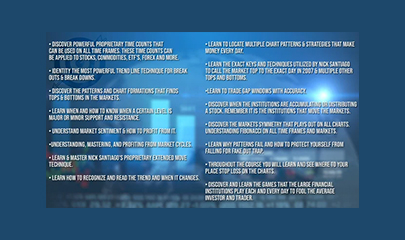 The Methodology Revealed By Nick Santiago And Gareth Soloway - InTheMoneyStocks
1 × $209,00
The Methodology Revealed By Nick Santiago And Gareth Soloway - InTheMoneyStocks
1 × $209,00 -
×
 2023 12 Daze Bundle By John Overdurf
1 × $179,00
2023 12 Daze Bundle By John Overdurf
1 × $179,00 -
×
 Option Insanity Strategy By PDS Trader
1 × $69,00
Option Insanity Strategy By PDS Trader
1 × $69,00 -
×
 Changing Perspectives through the Rhizome By John Overdurf
1 × $23,00
Changing Perspectives through the Rhizome By John Overdurf
1 × $23,00 -
×
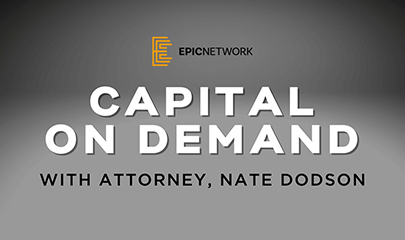 Capital On Demand Masterclass By Attorney - Nate Dodson
1 × $311,00
Capital On Demand Masterclass By Attorney - Nate Dodson
1 × $311,00 -
×
 Master of Connection By John Keegan
1 × $209,00
Master of Connection By John Keegan
1 × $209,00 -
×
 Authentic Man Program (AMP) - Inner Circle Podcasts DeluxeBundle
1 × $5,00
Authentic Man Program (AMP) - Inner Circle Podcasts DeluxeBundle
1 × $5,00 -
×
 Beyond Grandma Cake Roll: One Pan, Six New Cakes By Abigail Johnson Dodge
1 × $5,00
Beyond Grandma Cake Roll: One Pan, Six New Cakes By Abigail Johnson Dodge
1 × $5,00 -
×
 Orgasmic And Erotic Hypnosis Course 2023 By David Mears
1 × $186,00
Orgasmic And Erotic Hypnosis Course 2023 By David Mears
1 × $186,00 -
×
 The Power Your Launch 2023 By Abu Fofanah
1 × $23,00
The Power Your Launch 2023 By Abu Fofanah
1 × $23,00 -
×
 Remote Healing Mastery By Christof Melchizedek - Neo Shamanic Society
1 × $46,00
Remote Healing Mastery By Christof Melchizedek - Neo Shamanic Society
1 × $46,00 -
×
 Starter Guide to Investing: Stocks, Crypto & Precious Metals By Ryan Hogue
1 × $5,00
Starter Guide to Investing: Stocks, Crypto & Precious Metals By Ryan Hogue
1 × $5,00 -
×
 Game by Roosh V
1 × $5,00
Game by Roosh V
1 × $5,00 -
×
 Infield Mastery Program By Matt Artisan
1 × $69,00
Infield Mastery Program By Matt Artisan
1 × $69,00 -
×
 The Complete Guide to Multiple Time Frame Analysis & Reading Price Action By Aiman Almansoori
1 × $13,00
The Complete Guide to Multiple Time Frame Analysis & Reading Price Action By Aiman Almansoori
1 × $13,00 -
×
 Scaling With Systems by Ravi Abuvala
1 × $5,00
Scaling With Systems by Ravi Abuvala
1 × $5,00 -
×
 Kubera Energy Field - Kubera Mantra Energised 1008x By Spirituality Zone
1 × $15,00
Kubera Energy Field - Kubera Mantra Energised 1008x By Spirituality Zone
1 × $15,00 -
×
 The Everyday Gourmet: How to Master Outdoor Cooking By Bill Briwa & Patrick Clark
1 × $5,00
The Everyday Gourmet: How to Master Outdoor Cooking By Bill Briwa & Patrick Clark
1 × $5,00 -
×
 Understanding the DSM-5 by Karen Phillip & Wayne Phillip
1 × $31,00
Understanding the DSM-5 by Karen Phillip & Wayne Phillip
1 × $31,00 -
×
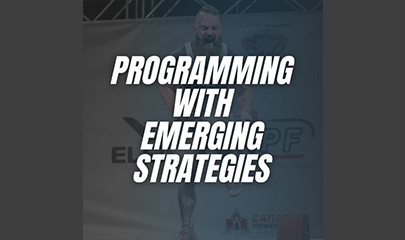 Programming with Emerging Strategies By Mike Tuchscherer - Reactive Training Systems
1 × $209,00
Programming with Emerging Strategies By Mike Tuchscherer - Reactive Training Systems
1 × $209,00 -
×
 Options Trading with Nick And Gareth By Nick Santiago And Gareth Soloway - InTheMoneyStocks
1 × $31,00
Options Trading with Nick And Gareth By Nick Santiago And Gareth Soloway - InTheMoneyStocks
1 × $31,00 -
×
 Wired For Weight Loss By Mark Patrick
1 × $23,00
Wired For Weight Loss By Mark Patrick
1 × $23,00 -
×
 The Chase Formula By Jon Sinn
1 × $6,00
The Chase Formula By Jon Sinn
1 × $6,00 -
×
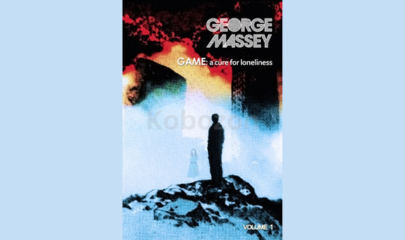 Game: a cure for loneliness by George Massey
1 × $5,00
Game: a cure for loneliness by George Massey
1 × $5,00 -
×
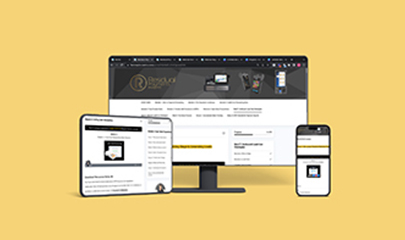 The Residual Payments Blueprint By Mario Lallitto
1 × $311,00
The Residual Payments Blueprint By Mario Lallitto
1 × $311,00 -
×
 Master Emotions By Stone River eLearning
1 × $23,00
Master Emotions By Stone River eLearning
1 × $23,00 -
×
 3D LUT Profile Daily Bread by Sef McCullough
1 × $8,00
3D LUT Profile Daily Bread by Sef McCullough
1 × $8,00 -
×
 The 3rd volume of the hugely successful 2GTS Program! - Sexual Mastery Club by 2 Girls Teach Sex
1 × $5,00
The 3rd volume of the hugely successful 2GTS Program! - Sexual Mastery Club by 2 Girls Teach Sex
1 × $5,00 -
×
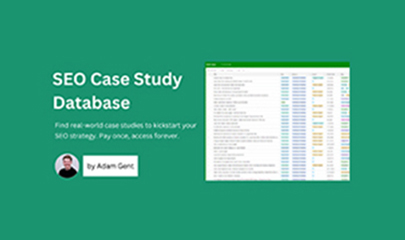 SEO Case Study Database 2023: Identify and validate opportunities in minutes By Adam Gent
1 × $21,00
SEO Case Study Database 2023: Identify and validate opportunities in minutes By Adam Gent
1 × $21,00 -
×
 Full Certification Training - Modules 1-6 By Michael Sitzer
1 × $78,00
Full Certification Training - Modules 1-6 By Michael Sitzer
1 × $78,00 -
×
 Flipper University - Pro Flipper PLUS Package (Beg, Intermediate, Freight) By Flea Market Flipper
1 × $209,00
Flipper University - Pro Flipper PLUS Package (Beg, Intermediate, Freight) By Flea Market Flipper
1 × $209,00 -
×
 History Greatest Voyages of Exploration By Vejas Gabriel Liulevicius
1 × $5,00
History Greatest Voyages of Exploration By Vejas Gabriel Liulevicius
1 × $5,00 -
×
 Wheel of Consent: Giving, Receiving, Taking, and Allowing By Dr. Betty Martin
1 × $5,00
Wheel of Consent: Giving, Receiving, Taking, and Allowing By Dr. Betty Martin
1 × $5,00 -
×
 Sexual Magnetism Course By Charisma School
1 × $39,00
Sexual Magnetism Course By Charisma School
1 × $39,00 -
×
 Backtrade Marathon NEW By Real Life Trading
1 × $23,00
Backtrade Marathon NEW By Real Life Trading
1 × $23,00 -
×
 The 2021 TraderLion Stock Trading Conference By Trader Lion
1 × $5,00
The 2021 TraderLion Stock Trading Conference By Trader Lion
1 × $5,00 -
×
 A Complete Beginner to Advanced Trading Mentorship Program By Habby Forex Trading Academy
1 × $5,00
A Complete Beginner to Advanced Trading Mentorship Program By Habby Forex Trading Academy
1 × $5,00 -
×
 MovNat E-Course Starter Bundle (Mobility + L1F) By MovNat
1 × $109,00
MovNat E-Course Starter Bundle (Mobility + L1F) By MovNat
1 × $109,00 -
×
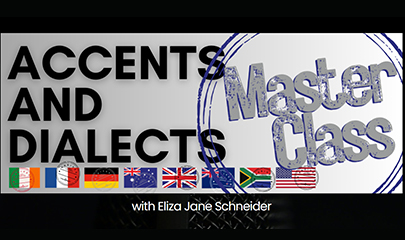 Accents and Dialects Master Class By Eliza Jane Schneider
1 × $62,00
Accents and Dialects Master Class By Eliza Jane Schneider
1 × $62,00 -
×
 Complete Copy Legends Swipe File Vault+Upsells By Matt Bockenstette
1 × $23,00
Complete Copy Legends Swipe File Vault+Upsells By Matt Bockenstette
1 × $23,00 -
×
 Product Alliance Full Library Access Pass By Product Alliance
1 × $202,00
Product Alliance Full Library Access Pass By Product Alliance
1 × $202,00 -
×
 Scalp Trading Mini Course By Jayson Casper
1 × $23,00
Scalp Trading Mini Course By Jayson Casper
1 × $23,00 -
×
 Direct Response Millionaire Playbook By Zarak
1 × $31,00
Direct Response Millionaire Playbook By Zarak
1 × $31,00 -
×
 Minerals And Crystals for Times of Stress
1 × $93,00
Minerals And Crystals for Times of Stress
1 × $93,00 -
×
 Transcendent Bodies: Tantric Massage for Queer Bodies By Barbara Carrellas
1 × $5,00
Transcendent Bodies: Tantric Massage for Queer Bodies By Barbara Carrellas
1 × $5,00 -
×
 Limitless 2.0 (Week 1 – 5) by David Tian
1 × $5,00
Limitless 2.0 (Week 1 – 5) by David Tian
1 × $5,00 -
×
 Adam Lyons Full VIP Archive
1 × $5,00
Adam Lyons Full VIP Archive
1 × $5,00 -
×
 Master The Bedroom Program By Apollonia Ponti
1 × $31,00
Master The Bedroom Program By Apollonia Ponti
1 × $31,00 -
×
 Full Manipulation Course Access By OMT Training
1 × $54,00
Full Manipulation Course Access By OMT Training
1 × $54,00 -
×
 Shake Off The Bridge – Saam Gin Yiu Kiu By Chow Gar Tong Long
1 × $23,00
Shake Off The Bridge – Saam Gin Yiu Kiu By Chow Gar Tong Long
1 × $23,00 -
×
 Conscious Cashflow Triad By Jesse Elder
1 × $101,00
Conscious Cashflow Triad By Jesse Elder
1 × $101,00 -
×
 Bank And Financial Institution Modeling 2024 By Breaking Into Wall Street
1 × $109,00
Bank And Financial Institution Modeling 2024 By Breaking Into Wall Street
1 × $109,00 -
×
 Messaging Program By Phoebe Kuhn - The Content Emporium
1 × $209,00
Messaging Program By Phoebe Kuhn - The Content Emporium
1 × $209,00 -
×
 The Direct Dating Academy by Sasha Daygame
1 × $5,00
The Direct Dating Academy by Sasha Daygame
1 × $5,00 -
×
 Guard Pass by Leonardo "Tunico"
1 × $6,00
Guard Pass by Leonardo "Tunico"
1 × $6,00 -
×
 Vaginal Kung Fu by Kim Anami
1 × $5,00
Vaginal Kung Fu by Kim Anami
1 × $5,00 -
×
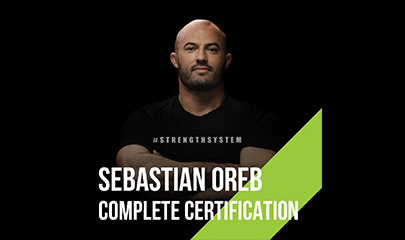 Strength System International Level 1+2+3 By Sebastian Oreb
1 × $148,00
Strength System International Level 1+2+3 By Sebastian Oreb
1 × $148,00 -
×
 MovNat Mobility Bundle By MovNat
1 × $54,00
MovNat Mobility Bundle By MovNat
1 × $54,00 -
×
 Dynamic Hypnosis for Pain Control By Michael Ellner - Scott Sandland
1 × $31,00
Dynamic Hypnosis for Pain Control By Michael Ellner - Scott Sandland
1 × $31,00 -
×
 The Cash Flow Masterclass By Oana Labes
1 × $62,00
The Cash Flow Masterclass By Oana Labes
1 × $62,00 -
×
 Setups of a Winning Trader By Gareth Soloway
1 × $521,00
Setups of a Winning Trader By Gareth Soloway
1 × $521,00 -
×
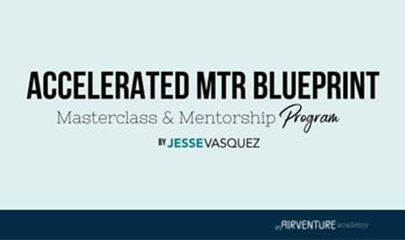 The Accelerated MTR Blueprint Masterclass 2023 By Jesse Vasquez
1 × $699,00
The Accelerated MTR Blueprint Masterclass 2023 By Jesse Vasquez
1 × $699,00 -
×
 Venture Capital And Growth Equity Modeling 2024 By Breaking Into Wall Street
1 × $46,00
Venture Capital And Growth Equity Modeling 2024 By Breaking Into Wall Street
1 × $46,00 -
×
 The Great Tours: France through the Ages By John Greene
1 × $5,00
The Great Tours: France through the Ages By John Greene
1 × $5,00 -
×
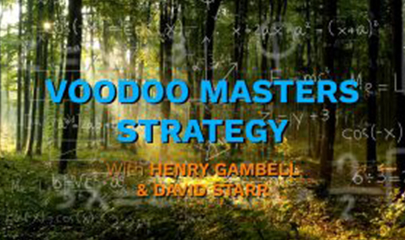 Voodoo Masters Strategy ELITE By David Starr & Henry Gambell - Simpler Trading
1 × $23,00
Voodoo Masters Strategy ELITE By David Starr & Henry Gambell - Simpler Trading
1 × $23,00 -
×
 7 Powers Package By John Demartini
1 × $31,00
7 Powers Package By John Demartini
1 × $31,00 -
×
 Pinterest Marketing for Makers and Designers By Megan Auman
1 × $5,00
Pinterest Marketing for Makers and Designers By Megan Auman
1 × $5,00 -
×
 Content Empire OS by Matt Gray
1 × $23,00
Content Empire OS by Matt Gray
1 × $23,00 -
×
 Smart Man Crew- Master Mobile Photography and Videography 2024 by Jozeph Ezzat Danial
1 × $23,00
Smart Man Crew- Master Mobile Photography and Videography 2024 by Jozeph Ezzat Danial
1 × $23,00 -
×
 Million Dollar Masterclass By Eileen Wilder
1 × $85,00
Million Dollar Masterclass By Eileen Wilder
1 × $85,00 -
×
 Agency Scaling Secrets by Jeff Miller
1 × $5,00
Agency Scaling Secrets by Jeff Miller
1 × $5,00 -
×
 7 Figure Sales Training and Script Bundle By Eric Cline
1 × $319,00
7 Figure Sales Training and Script Bundle By Eric Cline
1 × $319,00 -
×
 Sacred Success Coaching Method By Eden Carpenter
1 × $139,00
Sacred Success Coaching Method By Eden Carpenter
1 × $139,00
Beethoven’s Piano Sonatas By Robert Greenberg
$339,00 $5,00
A Deep Dive into Robert Greenberg’s “Beethoven’s Piano Sonatas” – Digital Download!
Let’s embark on a captivating adventure to uncover remarkable insights that spark your curiosity and elevate your understanding
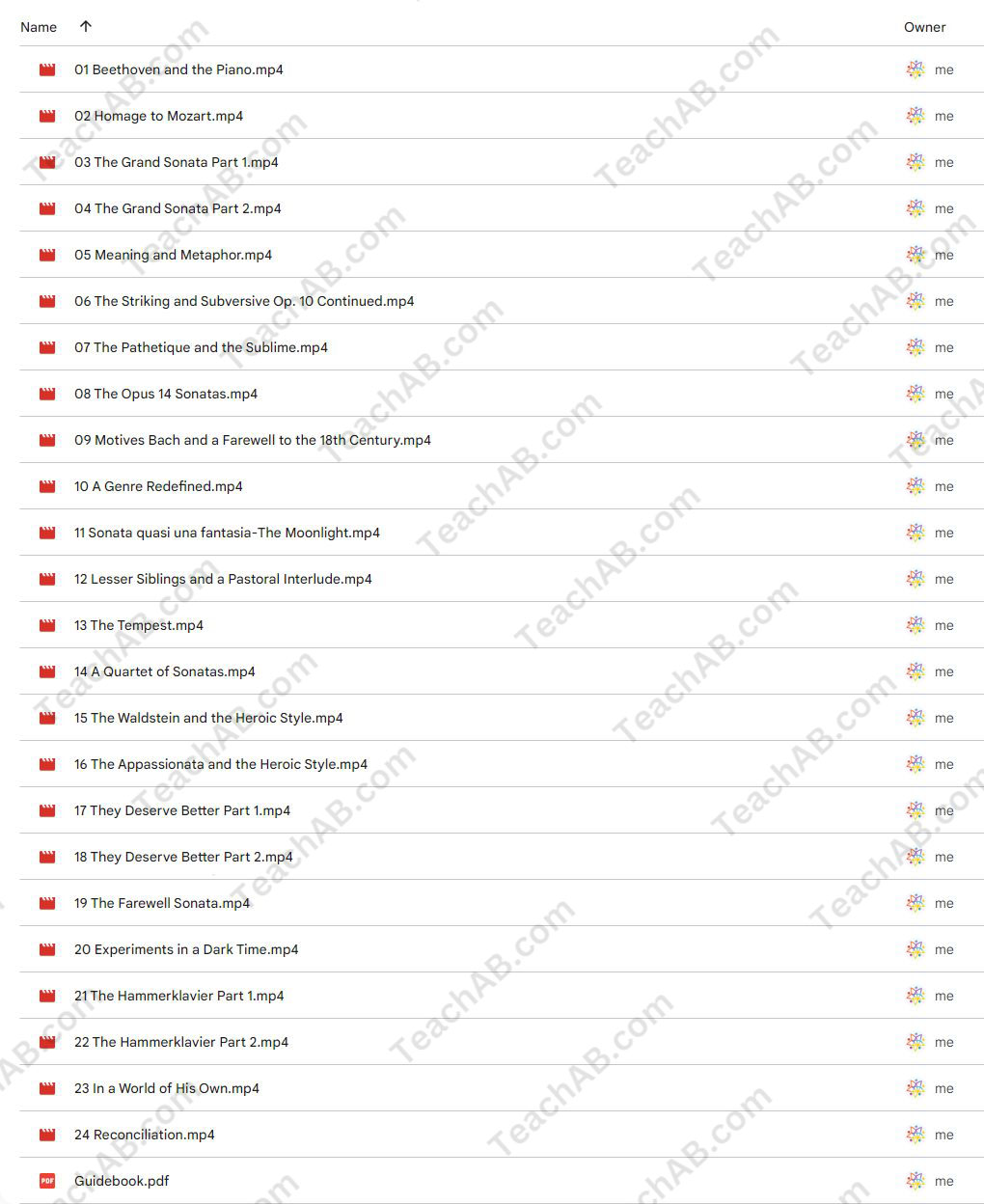
Beethoven’s Piano Sonatas By Robert Greenberg
Overview

A Deep Dive into Robert Greenberg’s “Beethoven’s Piano Sonatas”
Beethoven’s piano sonatas stand as monumental pillars in the edifice of classical music, each resonating with the complexity of human emotion and profound musical invention. In this context, Robert Greenberg’s lecture series, “Beethoven’s Piano Sonatas,” offers an illuminating journey through these masterpieces. This comprehensive examination not only highlights the sheer brilliance of Beethoven’s 32 piano sonatas, composed between 1795 and 1822, but also allows listeners to grasp the intricate layers of emotional depth and artistic innovation embedded within each piece. Greenberg’s passionate presentation style, combined with historical narratives and personal anecdotes, brings Beethoven’s world to life. With an engaging mix of analysis and accessible commentary, it provides both encyclopedic insight and a heartfelt appreciation of the revolutionary journey of one of music’s giants.
Overview of the Lecture Series
Structure and Approach
At the heart of Greenberg’s series is a well-organized structure that follows a chronological progression through Beethoven’s piano sonatas. This framework is not merely a timeline but serves as a narrative that encapsulates the evolution of Beethoven’s compositional style. Beginning with his early sonatas, listeners are gradually introduced to the more intricate and expansive later works. Each lecture meticulously unpacks specific pieces, revealing not just technical mastery but also the emotional terrains they traverse.
- Early Works (1795-1801): Characterized by classical influences and the burgeoning signs of Beethoven’s unique style.
- Middle Period (1802-1816): Marked by passionate and imaginative explorations that redefine traditional structures.
- Late Period (1816-1822): Encompasses revolutionary works like the “Hammerklavier” and Beethoven’s final three sonatas, characterized by a profound philosophical depth.
Musical Analysis and Historical Context
Greenberg’s insights go beyond mere musical notes. He intertwines detailed analysis of compositional techniques with rich historical context, painting a vivid picture of Beethoven’s life and the societal changes of his time. His discussion includes factors such as:
- The political climate of Beethoven’s era, impacting his creative output.
- Personal struggles, including deafness and isolation, that shaped the emotive gravity of his music.
- The interaction with other prolific musicians and how these relationships influenced his work.
Listeners gain not only an appreciation for Beethoven’s musical genius but also a deeper understanding of the man behind the music.
Engaging Presentation Style
Anecdotes and Personal Connections
One of the most compelling aspects of Greenberg’s lectures is his storytelling ability. He employs personal anecdotes and historical tales that enrich the experience, transforming academic learning into a relatable and enjoyable journey. For instance, his recounting of Beethoven’s intense compositional rituals or personal conflicts paints a multidimensional portrait of the composer.
When Greenberg discusses the “Hammerklavier,” he often juxtaposes its technical demands with Beethoven’s tumultuous life phases, allowing listeners to feel the weight of each note. These stories not only illustrate Beethoven’s struggles but also draw parallels with the listener’s own life experiences, creating emotional connections that resonate deeply.
Use of Recorded Excerpts
To further immerse listeners in the musical experience, Greenberg utilizes recorded excerpts from acclaimed pianist Claude Frank. This approach serves to bridge the gap between theoretical analysis and actual performance, providing tangible examples that enhance understanding.
The recorded performances illustrate critical points in each sonata; for example, the weighty emotional shifts in the “Appassionata” or the serene introspection found in the “Moonlight” Sonata. These tangible musical excerpts are crucial as they allow listeners to hear the artistry and nuances that Greenberg describes, turning abstract ideas into concrete sensations.
Insightful Critiques and Reflections
Intellectual Depth vs. Accessibility
Critics of Greenberg’s series often mention the depth of analysis he provides. While some may find the intricate dissection of Beethoven’s techniques daunting, many agree that the insights offered are invaluable. Greenberg strives to demystify complex musical concepts, allowing enthusiasts and scholars alike to appreciate:
- Historical significance: Understanding the context in which Beethoven created.
- Technical prowess: Recognizing innovative structures within the music.
- Emotional resonance: Connecting with the feelings conveyed in the sonatas.
The balance Greenberg strikes between rigorous analysis and accessible storytelling fosters a more profound understanding of not just Beethoven’s music but also the larger evolution of classical music throughout history.
Personal Reflections
Reflecting on my experience with the lecture series, I found myself initially intimidated by the depth of insight presented. However, as Greenberg skillfully unraveled the complexities, I discovered a newfound appreciation for both the artistic and emotional nuances of Beethoven’s work. The emotional weight of the later sonatas, particularly, felt like a mirror reflecting the tumult of human existence. Each lecture left me with lingering questions, inviting deeper contemplation and analysis, a hallmark of education that truly engages.
Conclusion
In summary, Robert Greenberg’s “Beethoven’s Piano Sonatas” is a pivotal exploration that connects the dots between history, music, and the emotional fabric of life itself. Through engaging storytelling, disciplined analysis, and the judicious use of performance excerpts, Greenberg creates a multifaceted experience that any music lover can appreciate. It stands out not merely as a study of piano sonatas but as a comprehensive guide to understanding the enduring impact of one of classical music’s most illustrious figures. Investing time in this series is more than an educational endeavor; it is an emotional journey through the life and works of Beethoven a testament to the transformative power of music across generations.
Frequently Asked Questions:
Innovation in Business Models: We use a group purchase approach that enables users to split expenses and get discounted access to well-liked courses. Despite worries regarding distribution strategies from content creators, this strategy helps people with low incomes.
Legal Aspects to Take into Account: Our operations’ legality entails several intricate considerations. There are no explicit resale restrictions mentioned at the time of purchase, even though we do not have the course developers’ express consent to redistribute their content. This uncertainty gives us the chance to offer reasonably priced instructional materials.
Quality Control: We make certain that every course resource we buy is the exact same as what the authors themselves provide. It’s crucial to realize, nevertheless, that we are not authorized suppliers. Therefore, the following are not included in our offerings: – Live coaching sessions or calls with the course author.
– Entry to groups or portals that are only available to authors.
– Participation in closed forums.
– Straightforward email assistance from the writer or their group.
Our goal is to lower the barrier to education by providing these courses on our own, without the official channels’ premium services. We value your comprehension of our distinct methodology.
Be the first to review “Beethoven’s Piano Sonatas By Robert Greenberg” Cancel reply
You must be logged in to post a review.




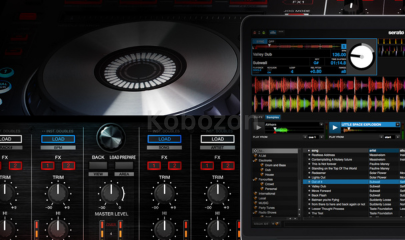



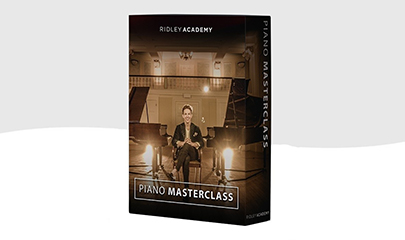

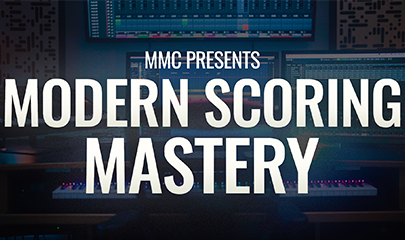

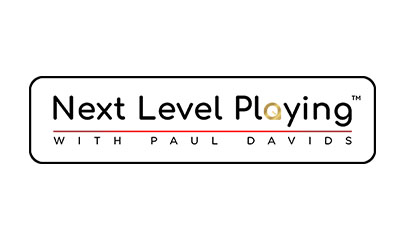



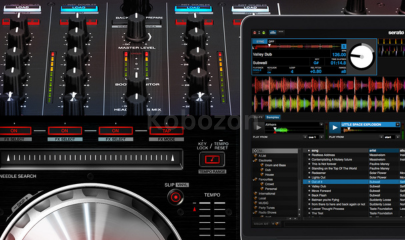


Reviews
There are no reviews yet.